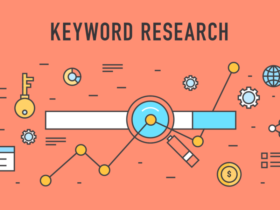The 2018 European Union’s General Data Protection Regulation, or GDPR, started the snowball of records tracking and privacy law within the United States, all, however, killing off what we recognize as behavioral “audience-based” targeting. However, these regulatory headwinds empower content creators and publishers to bring advertisers new, revolutionary targeting techniques.
Content creators can provide GDPR-secure “contextually based totally audience focused on” to advertisers as an alternative to conventional cookie-primarily based behavioral targeting. But first, let’s be clear about a few things.
Change your assumptions: Consumers don’t want advertisements

.Behavioral concentration, coupled with RTB and the programmatic era, has given entrepreneurs a fake fact: they count on users to see their commercials and offers. In reality, does a narrowly focused, self-serving message ruin through the noise to make a client’s lifestyle better? Usually, no. Sorry to interrupt the information; however, clients don’t want ads: Ads have become commonplace, frequent, stressful, beside the point, and intrusive.
Not only do customers no longer need to see your advertisements, but over 40 percent of users assume following them across the net has become too aggressive. It’s regarded as a breach of privacy.
As the delivery of advertising and marketing improved, so did tracking and facts usage. “Audience concentrated on” was first referred to as “behavioral profiling” till it became thought that it sounded too invasive. In the hobby of self-regulation, the practice turned into relabeled “interest-based advertising and marketing.”Regardless of the shade of lipstick, customers have become aware and voted: they block commercials with the aid of hundreds of thousands. As of 2019, inside the U.S. Alone, over 75 million — or 26.Four internet users — allow ad blockers.
Consumers need content material (it is king, once more)
Content takes many bureaucracies, offering consumers numerous digital, print, audio, video, cellular, domestic, work, or inside vehicles. Marketers once took into consideration that 500 cable channels were fragmented. The net has redefined media fragmentation, reworking purchaser niches into mass markets. Journalism, once reserved for specialists, is now decentralized and social. Your buddies are authors. The conventional marketing version is at the bottom of most customers’ content cost chains.
If an advertiser’s message is accurate, informative, simple, unique, and interactive, it is probably considered high-quality content. But most ads are traditional and don’t meet these standards. Consumers are embracing personalized, timely, cost-introduced content material from manufacturers. However, these “private” formats are assigned to make content material relevant at scale while heading off burdensome personalization expenses. As publishers know, true content material takes time and painting. But while content advertising works, it drives returns like an annuity—generating ROI properly past the investment date.
Content creators very own the consumer.
In an international context wherein content material is king, the publisher owns the user courting and is no longer the advertiser. While, in a few cases, it can be best for publishers to interact in a “consent” campaign on an advertiser’s behalf, it’s not likely that publishers are inclined to “promote” their customers without problems. After all, publishers need users to go back and cultivate a deeper relationship based on excellent content that agrees with them. Publishers can then sell “access” for advertisers to interaction with customers (aka advertising).
The complete advert tech surroundings have been constructed across the consumer and the cookie. Attribution is no longer possible as we know it. Upper funnel possibilities are unknown. There’s no manner to the song, measure, or profile them. When you directly own the client dating, cookies, device IDs, emails, and other non-public identifiers are perfect. Advertisers recognize their customers and what they buy. Advertisers can reach out to clients at once or via retargeting. Customers want to date with advertisers because the advertiser brings value. For anonymous customers and prospects, advertisers have restricted visibility without a choice. However, publishers realize their readers and how customers devour content material. Publishers have perfect visibility into their websites. Under GDPR, a publisher’s URL is the brand new nameless identifier.
The patron continuum
Marketers have utilized advertising to power upper funnel metrics, like purchase motive and logo focus. Advertising is likewise used to push potentialities into the CRM sales funnel. Customer relationship management (CRM) is normally a business-to-enterprise or patron-direct advertising approach. After the pinnacle funnel, impression, conversion, and retention are regularly managed with the aid of a special team, department, or organization. This exercise will quickly become useless, requiring unification across the patron lifecycle, from top to back.
Using something I call a “contextual audience” strategy is based on cooperation from publishers for “profiling” content that advertisers can use as an opportunity to behavioral target market segments. Consider profiling around a URL (content) and no longer a cookie (user). This might be a new concept to embrace because URLs aren’t the ideal identifiers for possibilities or customers. But till an advertiser gets user consent, a writer’s content URL is the best GDPR-compliant identifier, and an advertiser has to understand nameless, pinnacle-of-funnel consumer conduct. Advertisers This means that publisher content material taxonomies need to be deeper and more obvious than ever before. Here are four key steps publishers and advertisers must take to execute the alternative to cookie-based, totally behavioral focus.










![Must-Know Visual Content Marketing Statistics for 2019 [Infographic] 35 Must-Know Visual Content Marketing Statistics for 2019 [Infographic] 35](https://aws.wideinfo.org/seoreka.com/wp-content/uploads/2019/05/08110315/data-driven-content-marketing-750x346.png)
